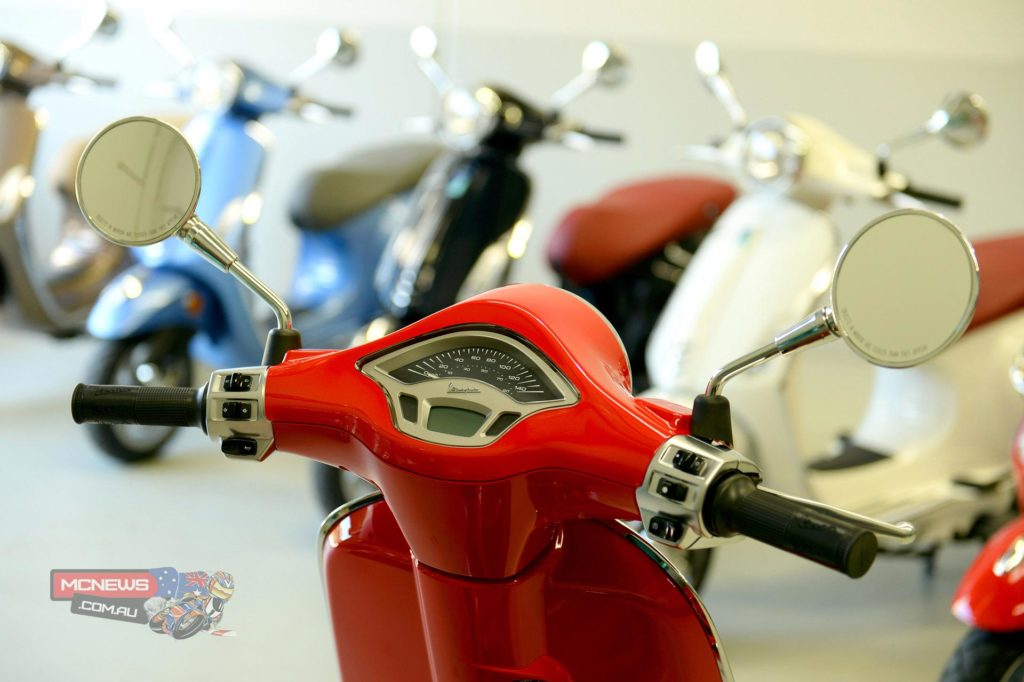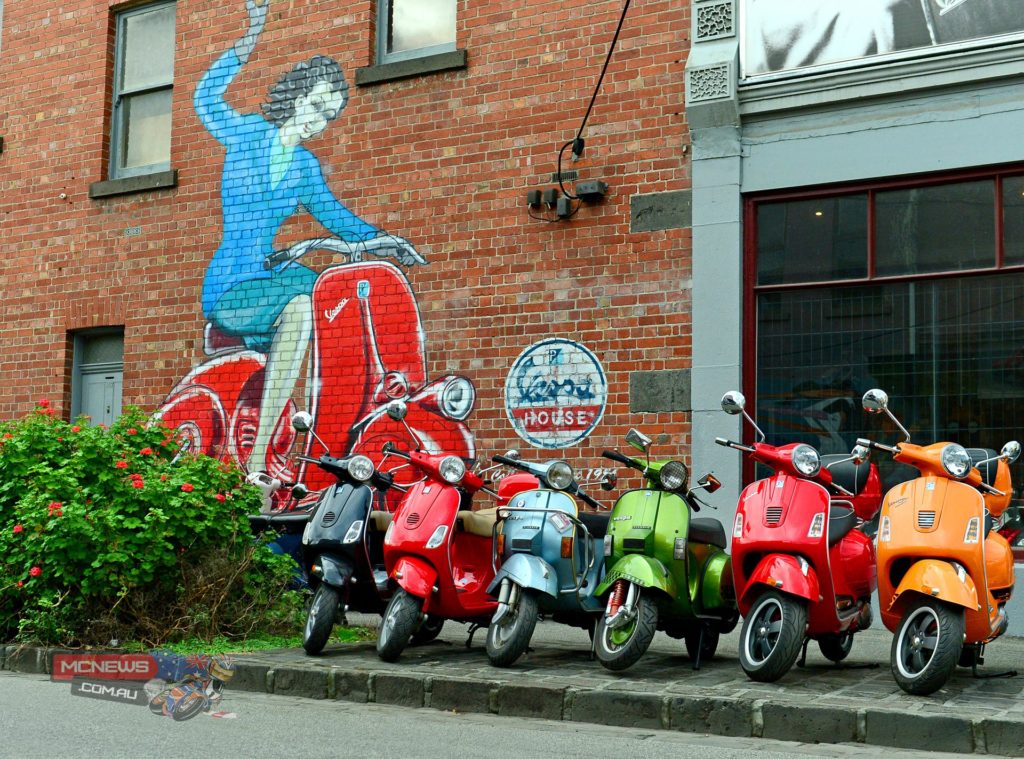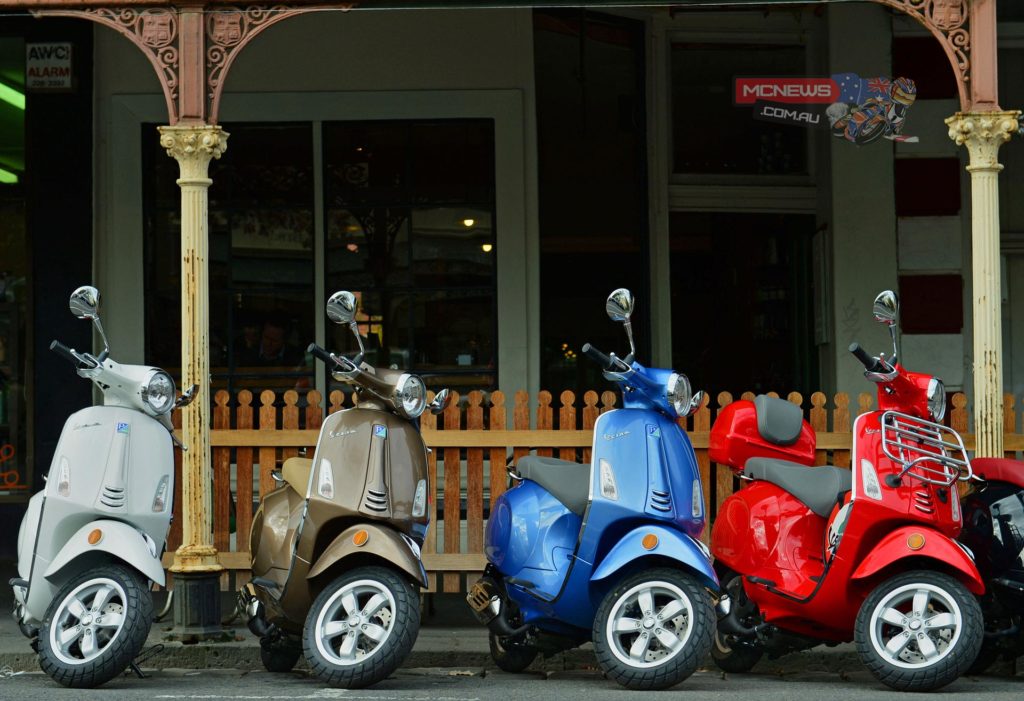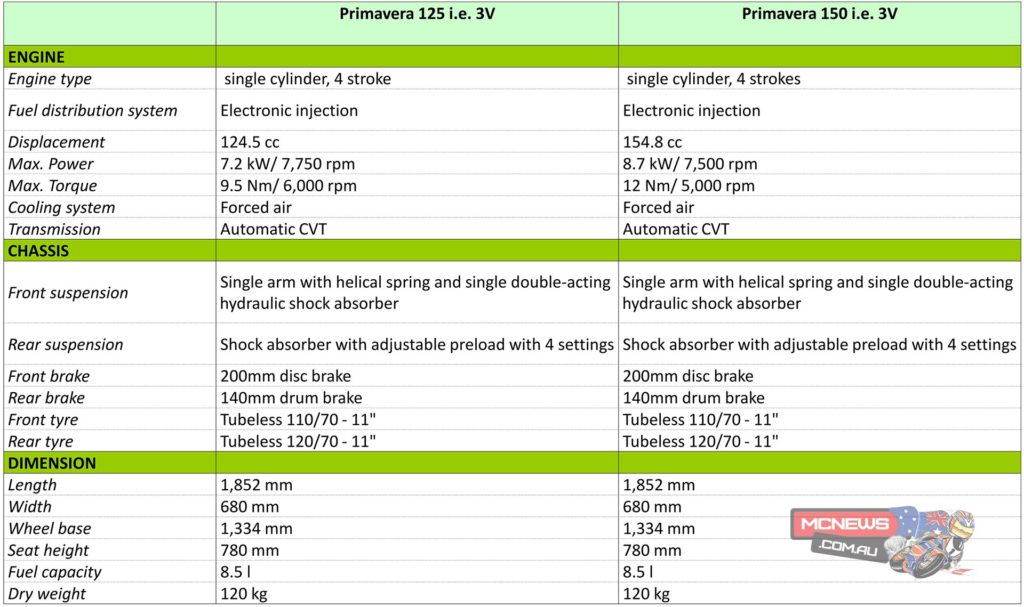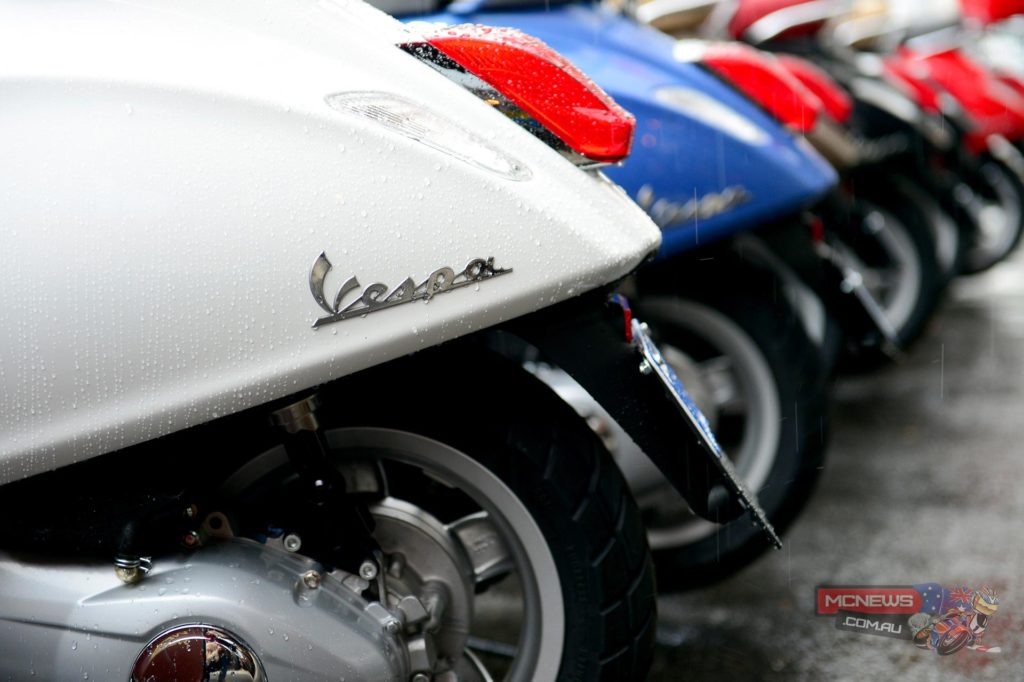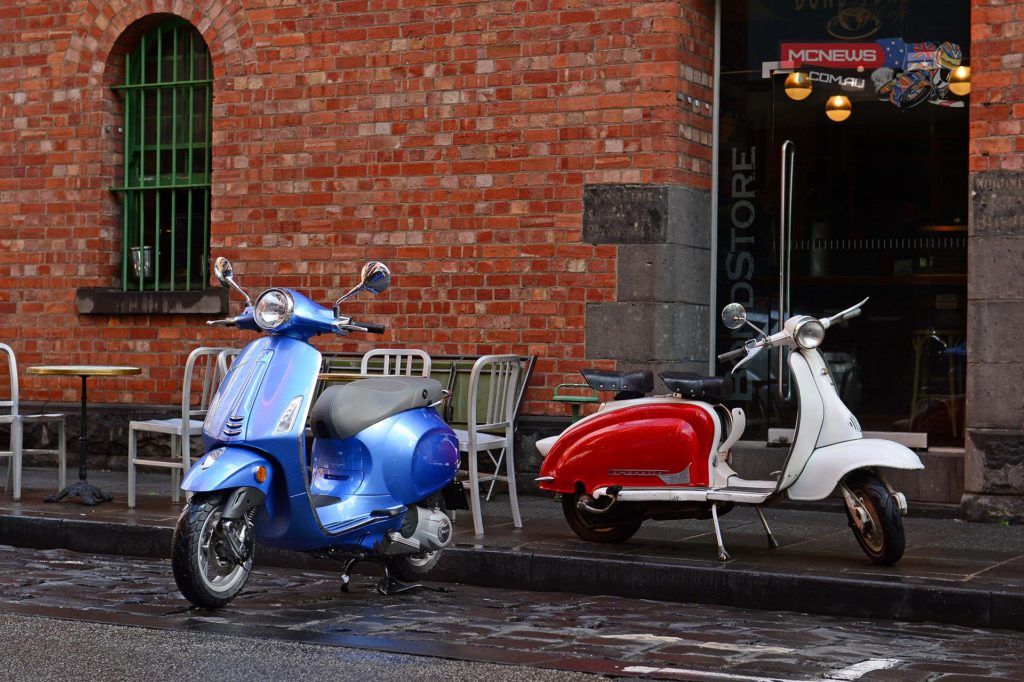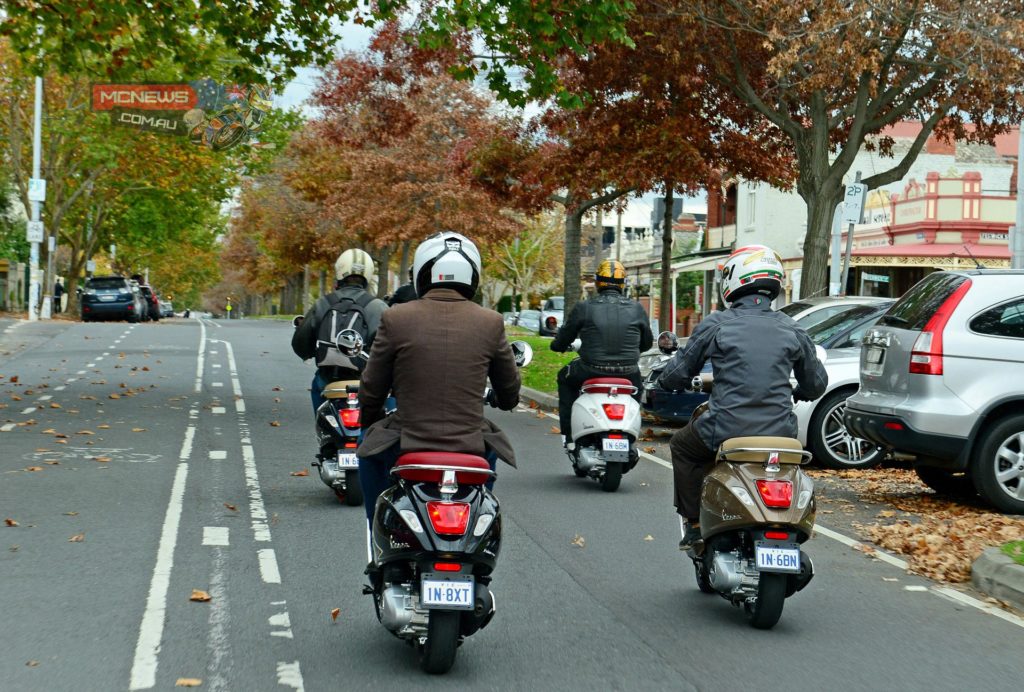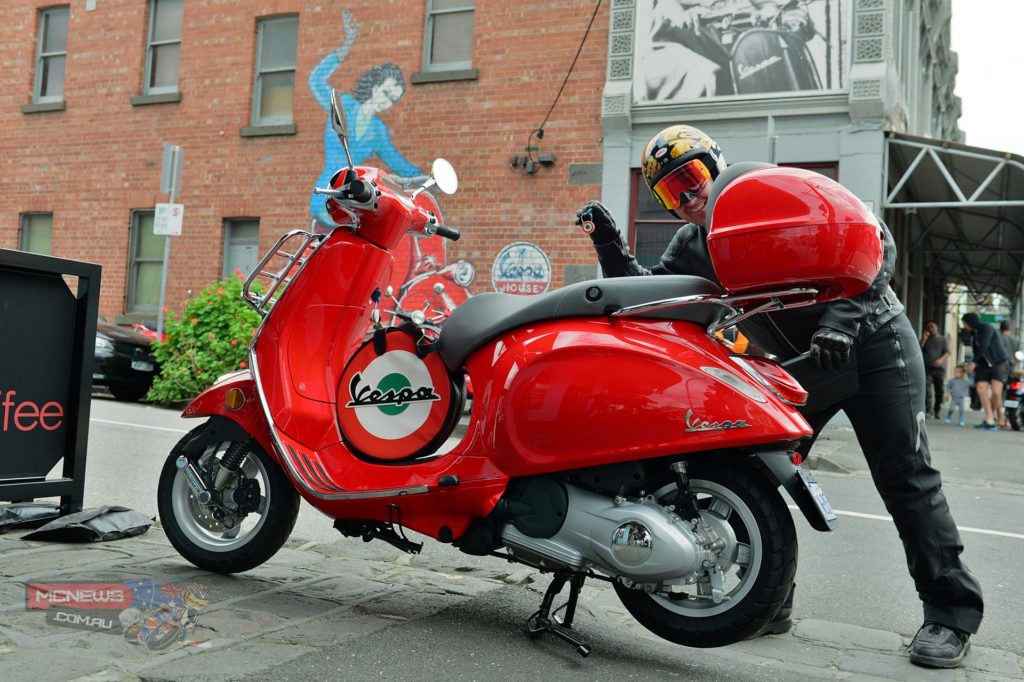Vespa Primavera Review – By Trevor Hedge
Vespa was cool before hipster was cool, and remains cool now that hipster is so not cool; the same way as Vespa has seen other trends come and go it has remained current by staying fundamentally true to the roots it established in 1946. Since that first 98cc model, Vespa has sent more than 18 million machines on to the world’s roads, including more than 1.3 million in the last decade alone. And as per the first machine that rolled out the door in Florence 68 years ago, Vespa retains all-steel unibody panel work, something that, in this plastic age, is distinctly unique.
Around five years ago traditional scooter manufacturers came under serious attack in the marketplace from a mix of new brands entering the market with very low prices. The scooter market grew starkly as a result but over the last couple of years scooter sales have contracted markedly from that boom. It is interesting to note, however, that according to industry figures, the premium brands are holding their ground, and it is the new players at the lower end of the market that are suffering most badly from the downturn.
We quizzed Piaggio/Vespa Australia’s Brand Manager Gavin Moody on this interesting sales trend, “Our premium models continue to perform very strongly in the market with Vespa up a healthy 37 per cent over 2013 so far this year.
“There has been a rationalisation of the market in recent years in the entry level scooter segment, 125-150cc and the 50cc capacity in particular. Unknown or less established brands trading purely on price are diminishing as they try to maintain sales figures in these categories. This in turn sees buyers turn to recognised brands with strong dealer network support.
“Recent increase in competition from entry level motorcycles has also contributed in some part to the decrease in overall scooter sales, however, for learners and entry level commuters, a scooter still provides the easiest and most efficient choice of transport particularly as parking, road congestion, fuel and public transport costs all continue to grow.”
So while, overall, the Australia scooter market is shrinking, Vespa is riding along just fine and recently released a significant new model to replace their biggest selling LX series, the new Primavera.
Every Vespa model shares a definite styling lineage stretching right back to that first model, and those styling cues are still distinctly visible on the Primavera, albeit with a more modern slant borrowed from last year’s delectable 946 showpiece, a limited edition machine that promised to show the way for the next Vespa generation. The Primavera is the first fruit from those 946 loins, so to speak.
Sold in both 125cc ($5290) and 150cc ($5990) guises both offer spritely getaways from city traffic lights, but if highway hauls are on the agenda then the extra torque of the longer stroke machine helps the 120kg Primavera maintain 100km/h much more easily.
Both engines are four-stroke, single-cylinder powerplants of three-valve design with the smaller of the two able to cover almost 50km on a single litre of fuel. With a generous 8.5 litre fuel cell that gives the Primavera a handy 400km fuel range.
Vespa mandate 10,000km service intervals but a smart owner planning on keeping their Primavera for years to come would be wise to do an extra oil change in the interim.
At first glance I actually preferred the instrumentation of the previous model but my opinion changed as I familiarised myself with the new look. An LCD display is now nestled under an improved analogue speedometer. The LCD includes odometer, tripmeters, segmented fuel gauge and a digital clock.
No ABS is present on the machine which is perhaps why Vespa have made the 200mm single front disc brake system very modest in regards to initial bite and outright braking power. The rear drum brake is significantly larger than its predecessor and is much more aggressive than the front stopper.
The Primavera rolls on a longer wheelbase and stiffer chassis than its forebears which, combined with larger diameters rims and tyres (110/70-11 F – 120.70-11 R), aids stability.
New engine mounts are claimed to reduce vibration by up to 40 per cent. Certainly during our 85km aboard the Primavera I never noticed any annoying vibes through the new saddle or bars.
At 780mm the seat height is a little higher than one would imagine but the step-thru design means that even short folk have no problem climbing aboard. The extended wheelbase has also allowed more room for both the rider and passenger while offering a larger 16.6 litre underseat storage capacity which easily swallows a helmet. There is also an improved glovebox design with handy pockets for your essentials. A small oversight is the lack of any charging outlet for your phone or accessories.
While the LX machines made do with only a centre-stand the Primavera offers the added convenience of a sidestand. The footboard area is also now tapered to make it slimmer where the rider would put their foot down at the lights.
While I can’t comment on the power of the lights I did notice that the headlight is now switchable rather than the always-on design of the LX. While the Primavera is distinctly retro cool the LED powered DRL (daytime running lights) add a distinctively modern and fresh face. The tail light is so large it wouldn’t look out of place on a workman’s van let alone the slim and sculpted rear end of the Primavera. However, with the alarming amount of scooters and motorcycles rear-ended at traffic lights by inattentive drivers that is no bad thing.
Overall the Primavera represents a thoughtful approach combining lots of little tweaks to aid convenience and performance, while bringing the styling brilliance of the Vespa 946 to the masses at an affordable price. Vespa still shows no sign of going out of fashion…
